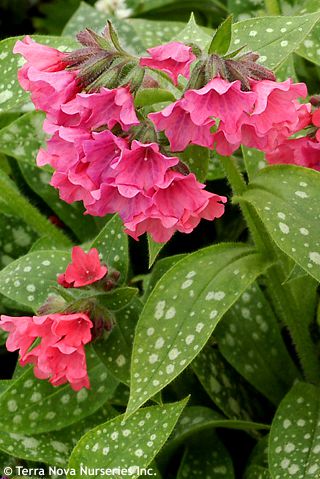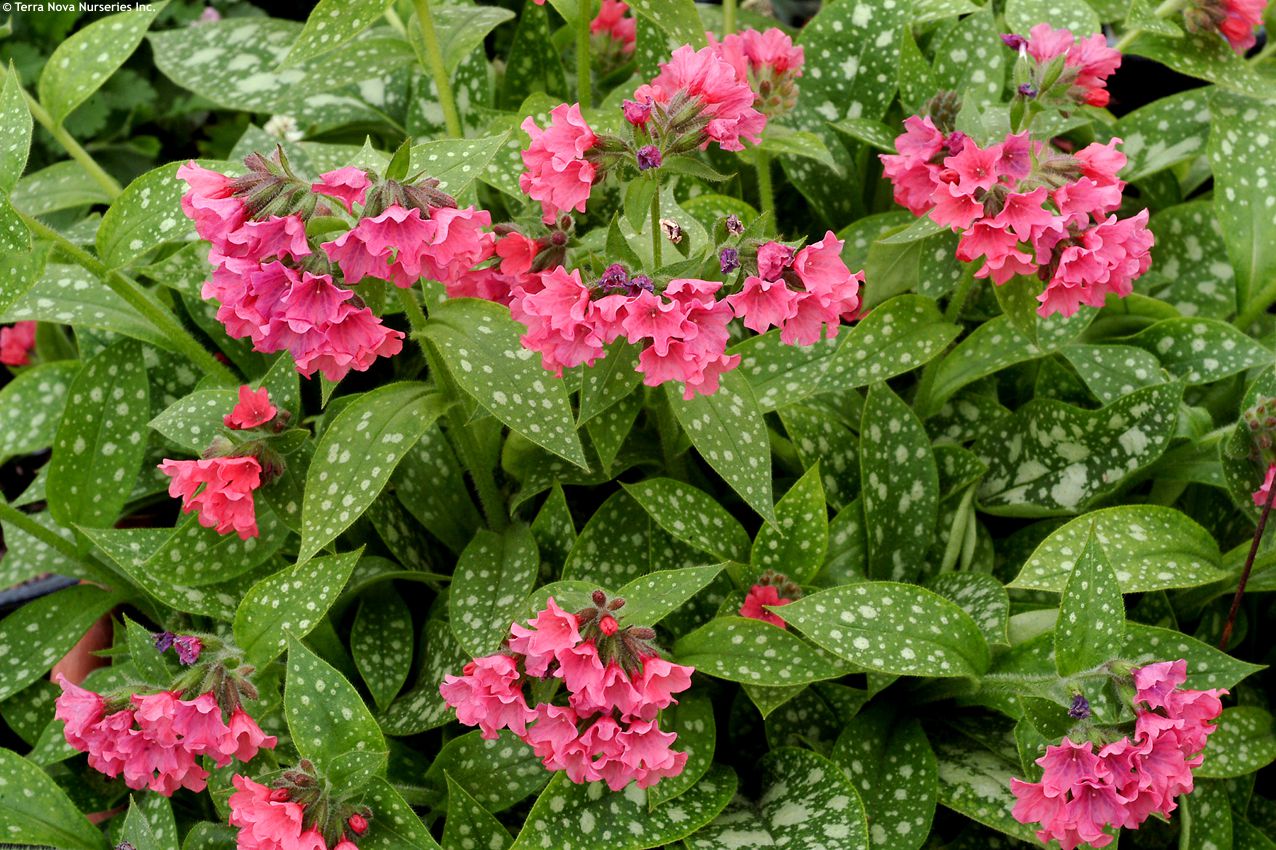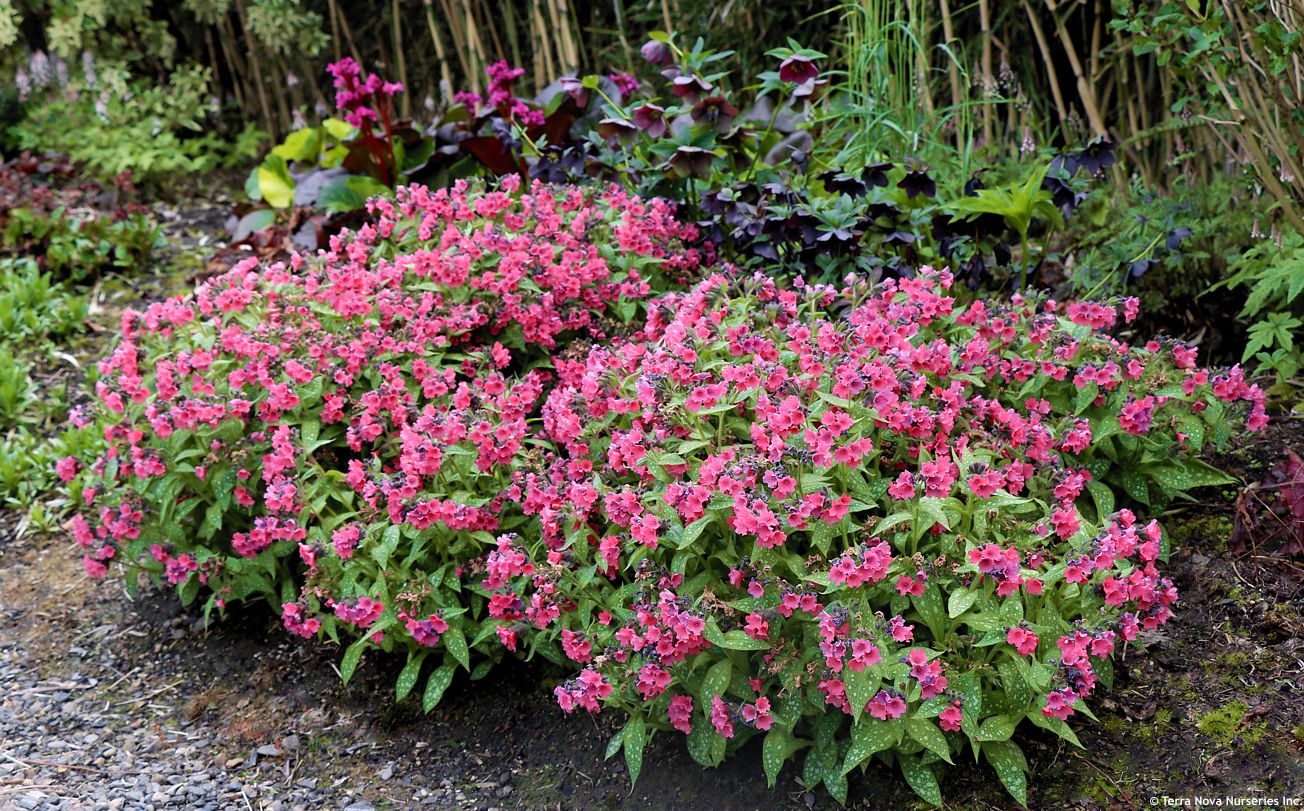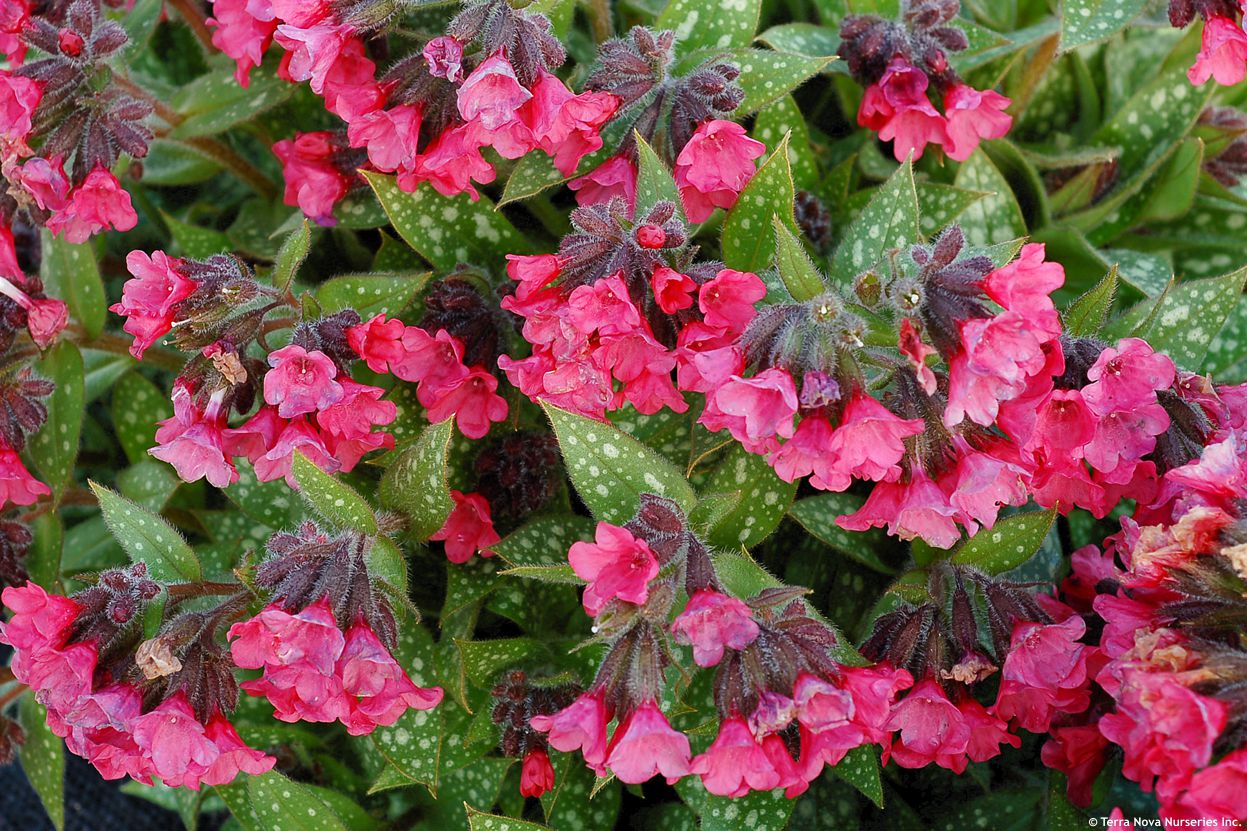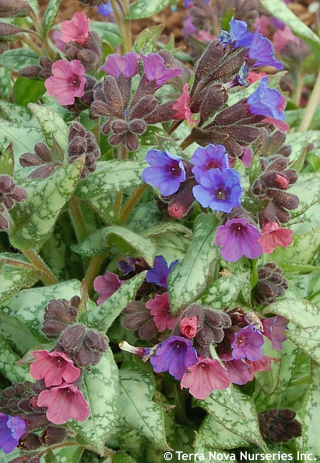Pulmonaria 'SHRIMPS ON THE BARBIE' lungwort
size/type
low or groundcovering,low perennial
usual height
0,2-0,2m
usual width
0,4-0,6m
leaves
semi-deciduous broadleaf
colour of leaves
flowers
showy
colour of flowers
blooming time
April
location
semi-shade to shade
soil type
any (acidic to alkaline)
soil moisture requirements
evenly moist but well-drained
USDA zone (lowest)
4 (down to -34°C)
winter protection
for zone 5+6

for zone 7

categorized
Pulmonaria
Lungwort is a genus of about 16 perennial species originally found in woodlands and at streamsides in Europe and Asia, and for centuries has been used as a medicinal plant. Plants are characterized by pink and blue flowers, often both colours found the same plant, while other varieties are single-coloured and flowers on some may get so pale to appear almost white. Some produce very handsome foliage of larger size and various patterns. Most species are woodland plants suitable for (part)shaded locations, some prefer full sun, and a few even tolerate short spells of drought. However, in modern horticulture, in order to achieve the best flowers as well as lush foliage, they are often hybridized with one another, so it is best to grow these hybrids preferably in woodland conditions.Description of the plant:
Shrimps on the Barbie – how does that sound to you? Picture this: a barbie doll brought to life, sunbathing, using a shrimp cocktail in place of sunblock leaving her disproportionate vinyl body covered with seafood while a 90’s smash by Danish band Aqua is blasting out. But. Barbie is also an Australian slang for barbecue, i.e., this perennial‘s name might supposedly resemble grilled prawns at a hot party down under. The only thing than might make you wonder how come is the fact that it was bred at an American nursery Terra Nova. Could it be that they had an Aussie jokester on their breeding team who wanted to leave at least a little imprint of his culture in a name of a new plant?Shrimps on the Barbie lungwort was my love at first sight. This spectacular variety bears deep raspberry-pink flowers without blue or purple hues against a background of attractively variegated leaves. In CE continental climate, flowering begins during the first warmer days of spring, usually in early April, and continues for about a month. Flower stems are 20-30 cm high. The leaves are conspicuously blotched with silver-grey spots of various sizes on rich green background that is warmer compared to most other lungwort varieties which are more of a cold-tone greyish green. They are semi-evergreen, broadly lanceolate, small during flowering and as soon as flowering finishes emerge new leaves that are up to three times as large. They are the result of three-way crossing, using the best of the genes of p. saccharata.
Lungwort, especially its large-leaved forms need equally moist, fertile soil that does not dry out, or is waterlogged. It needs partial or complete shade; it is an ideal understory of tall trees providing only filtered sunlight. Use it in mixed beds with hostas or liriope. Even if the leaves look alright after winter remove all of them in early spring. Hardy to abt. -34 °C (USDA zone 4).
Last update 31-03-2024
QUICK PRICE OVERVIEW
CURRENTLY SOLD OUT
WANT TO TRY A SIMILAR PLANT?












